UPSC Daily Current Affairs- 13th April 2024 | Current Affairs & Hindu Analysis: Daily, Weekly & Monthly PDF Download
GS-I
Volcanic Vortex Rings
Subject: Geography
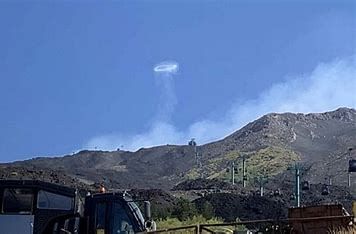
Why in News?
Mount Etna volcano has been producing nearly perfect rings of smoke in the sky, a rare event known as volcanic vortex rings.
About Volcanic Vortex Rings:
- These formations occur when gas, mainly water vapor, is swiftly released through a vent in the volcano's crater.
- The rings can linger in the atmosphere for about 10 minutes but are prone to breaking apart rapidly under windy and turbulent conditions.
- The phenomenon was initially observed at Etna and Vesuvius in Italy back in 1724.
- In more recent times, volcanic vortex rings have been witnessed at various volcanoes worldwide, including Redoubt in Alaska, Tungurahua in Ecuador, Pacaya in Guatemala, and others.
Key Facts about Mount Etna:
- Mount Etna, also known simply as Etna, stands as an active volcano on Sicily's east coast, the largest island in the Mediterranean Sea.
- Etna boasts the highest peak in Italy south of the Alps and is Europe's largest and among the most active volcanoes.
- The volcano's summit features five craters, primarily responsible for its eruptions, alongside "flank" eruptions from numerous vents scattered across the mountain's slopes.
- Designated as a UNESCO World Heritage Site in 2013.
Source: Indian Express
Data for Better Education: A Brighter Future for Students
Subject: Social Issues
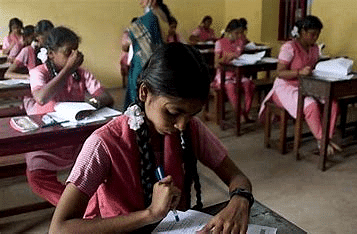
Why in News?
The Annual Status of Education Report (ASER) 2023 was published in mid-January this year.
Foundational Learning Trajectories as per ASER 2023 Beyond Basics Survey
- District Level Representation: The survey covered 28 rural districts across 26 states, offering insights into the activities, abilities, and aspirations of 14-18 year olds at the district level, though not nationally representative.
- Literacy Challenges: Approximately 26% of 14-18 year olds struggle to read a standard text in their regional language, indicating worrisome literacy levels.
- Distribution of Children without Basic Reading Skills: Among those lacking basic reading skills, 57% are in standard 10 or below, with 28% not enrolled in any educational institution, emphasizing the need for targeted interventions.
- Challenges in Reading Improvement: Children facing reading difficulties may experience social challenges, emphasizing the importance of diverse reading materials beyond textbooks.
Children and Careers
- Educational Aspirations: Over 60% of surveyed adolescents aim for a college education, with girls showing a higher inclination towards higher education compared to boys.
- Work Aspirations: One in five respondents had not seriously considered future careers, with varied preferences among boys and girls.
- Perceptions of Vocational Education: Vocational education perceptions vary, with some areas viewing it negatively as a second-choice option, while in Solan, Himachal Pradesh, vocational courses like tourism and hotel management are gaining popularity.
- Challenges Related to Careers: Youth require mentorship and support to explore aspirations and prepare for their chosen paths.
Digital Literacy as per ASER 2023 Report
- Smartphone Ownership Disparity: Boys aged 14-18 are more likely to own smartphones compared to girls.
- Digital Literacy Gap: Girls exhibit lower proficiency in using smartphones or computers compared to boys.
- Educational Technology Usage: While smartphones are used for educational purposes, entertainment and social media take precedence, indicating a need to enhance educational utilization of digital tools.
- Gender Disparities: Boys demonstrate higher online safety awareness than girls, emphasizing the necessity for comprehensive strategies to bridge the digital gender gap.
Suggestive Measures to Address Identified Issues
- Improving Foundational Learning: Enhance school attendance and support for 14-18 year olds with insufficient reading skills.
- Role of Community Libraries: Manage community libraries effectively to foster a reading culture and support readers of all ages.
- Educational and Career Aspirations: Provide exposure and guidance to help youth make informed career choices.
- Digital Literacy and Gender Gaps: Encourage educational use of smartphones and address the gender gap in online safety awareness.
- Addressing Vocational Education Perceptions: Promote context-driven vocational courses aligned with local aspirations.
Source: The Hindu
GS-II
Muria tribe
Subject: Polity and Governance
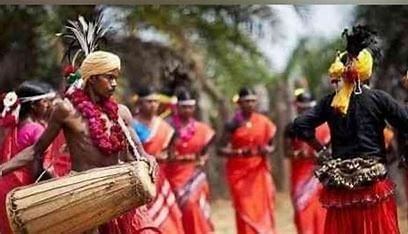
Why in News?
The Muria tribe lacks access to primary education, safe drinking water and social welfare benefits also remains a dream and they are at risk of displacement.
- Location: They are situated in the regions of Telangana, Andhra Pradesh, Chhattisgarh, and Odisha. The Muria people communicate in Koya, a Dravidian language.
- Muria settlements: Their settlements are recognized as homes of Internally Displaced People (IDPs), numbering approximately 6,600 in Andhra Pradesh. Within these regions, they are identified as 'Gutti Koyas' by the indigenous communities.
- Societal perspective: The Muria tribe exhibits a progressive outlook towards marriage and life in general. An illustrative example is the Ghotul, a communal living space or dormitory designed to facilitate an environment where Muria youth can explore and comprehend their sexuality.
- Recognition: The 'Gutti Koyas' held Scheduled Tribe (ST) status in Chattisgarh. However, this status was not extended to them in the states they migrated to, like Telangana.
Source: The Hindu
What is Article 371?
Subject: Polity and Governance
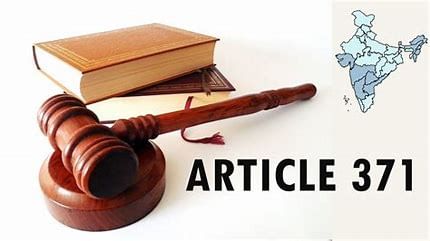
Why in News?
Recently, Article 371 gained attention when the president of a national party in India mentioned it during a public rally in Rajasthan.
About Article 371
Article 371, found in part XXI of the Indian Constitution, has been in effect since January 26, 1950. It confers specific powers to certain States.
Key Points Regarding Article 371
- Article 371 was introduced via amendments under Article 368.
- Article 371 specifically addresses the States of Maharashtra and Gujarat.
- It mandates the Governor of Maharashtra to establish separate development boards for Vidarbha, Marathwada, and the rest of the State.
- The Governor of Gujarat has a similar responsibility for Saurashtra, Kutch, and the rest of Gujarat.
Specific Articles under Article 371
- Article 371A: Ensures that no Act of Parliament regarding the Nagas' religious or social practices, customary law, civil and criminal justice, and land ownership applies to Nagaland without the State's Legislative Assembly approval.
- Article 371B: Pertains to Assam and empowers the President to oversee the Constitution and operations of a Legislative Assembly committee consisting of elected tribal members.
- Article 371C: Applies to Manipur and mandates the formation of a legislative committee representing the Hill Areas of Manipur.
- Articles 371D and E: Contain special provisions for Andhra Pradesh and Telangana, enabling the President to ensure equal opportunities in public employment and education across different regions of the states.
- Article 371F: Applies to Sikkim and dictates that the State Legislative Assembly should have a minimum of 30 members.
- Article 371G: Concerns Mizoram and includes provisions to protect Mizos' religious and social practices, customary laws, and land ownership and transfer.
- Article 371H: Grants the Governor of Arunachal Pradesh special responsibilities in maintaining law and order.
- Article 371I: Relates to Goa and mandates that the Legislative Assembly must have a minimum of 30 members.
- Article 371J: Provides special status to the Hyderabad-Karnataka Region and establishes a separate development board for the area.
Source: The Hindu
GS-III
Science Based Targets Initiative (SBTi)
Subject: Environment

Why in News?
Recently, there has been controversy and skepticism surrounding the permission of carbon offsetting for Scope 3 emissions of businesses with SBTi-based climate targets.
About Science Based Targets Initiative (SBTi):
- Established in 2015, the Science Based Targets Initiative (SBTi) is a global program with the primary goal of encouraging and assisting companies in setting science-based targets (SBTs) to lower greenhouse gas emissions and restrict global warming to below 2°C compared to pre-industrial levels.
- The SBTi operates through a partnership involving CDP, the United Nations Global Compact, the World Resources Institute (WRI), and the World Wide Fund for Nature (WWF).
- Targets set under the SBTi are designed to align with the objective of constraining warming to 1.5°C above pre-industrial levels, which represents the more ambitious aim of the Paris Agreement.
- Companies can opt to have their targets independently assessed and endorsed by the SBTi, ensuring that they are in harmony with the most recent scientific findings and are consistent with the Paris Agreement's objectives.
- Through the establishment of science-based targets, companies can exhibit their dedication to combatting climate change and lessening their carbon footprint.
- The SBTi makes a clear distinction between near-term and long-term goals and commitments.
- Near-term targets outline organizations' strategies for reducing emissions over the upcoming 5-10 years, which are critical for substantial advancements by 2030 and are essential prerequisites for net zero targets.
- Long-term targets specify the necessary emission reductions for organizations to attain net zero status, as per the criteria outlined in the SBTi Corporate Net-Zero Standard, by 2050 at the latest (2040 for the energy sector).
- The SBTi administers the SBTi Net-Zero Standard, an innovative framework for establishing corporate net-zero targets.
- It stands as the sole framework globally for setting corporate net-zero targets in accordance with climate science.
- It equips companies with the guidance and resources required to define science-based net-zero targets.
Source: DTE
 |
Download the notes
UPSC Daily Current Affairs- 13th April 2024
|
Download as PDF |
Great Barrier Reef
Subject: Environment
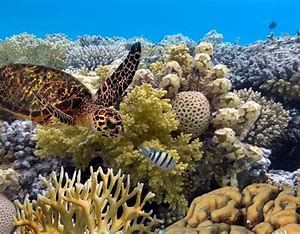
Why in News?
New evidence has shown that the coral bleaching in the southern part of the Great Barrier Reef this year is more severe than anticipated.
About Great Barrier Reef:
- Located in the Pacific Ocean off the northeast coast of Australia in the Coral Sea, the Great Barrier Reef is an extensive complex of coral reefs, shoals, and islets.
- It holds the distinction of being the longest and largest reef system globally, recognized as the most massive living structure on the planet.
- Comprising nearly 3,000 individual reefs and over 900 islands, this reef is so expansive that it can be seen from space.
- Acknowledged as a UNESCO World Heritage Site, the Great Barrier Reef is predominantly a marine protected zone overseen by the Great Barrier Reef Marine Park Authority of Australia.
Biodiversity:
- With an estimated 2,000 fish species and around 600 coral species, the reef boasts a rich and diverse ecosystem.
- Additionally, it serves as the habitat for six out of the seven known sea turtle species, showcasing its critical role in supporting marine life.
Source: DTE
The Blurry Lines Between Wildlife 'Capture' and 'Rescue'
Subject: Environment
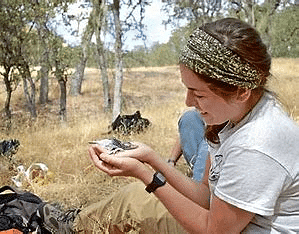
Why in News?
The distinction between wildlife 'capture' and 'rescue' is crucial in addressing human-animal conflicts. Let's delve into the differences and blurred lines between these two approaches.
Wildlife 'Capture'
- Definition: Wildlife capture involves taking wild animals into custody, mainly to mitigate conflicts with humans.
- Goal: The primary aim is to ensure human safety and prevent further damage.
- Example: Captured animals may undergo relocation, rehabilitation, or euthanasia based on circumstances.
Wildlife 'Rescue'
- Definition: Wildlife rescue entails providing aid to distressed wild animals to facilitate their recovery.
- Goal: The primary objective is to assist animals in distress and potentially reintroduce them to their natural habitat.
- Example: Rescue efforts involve medical treatment, rehabilitation, and eventual release back into the wild.
Blurred Lines and Real-World Scenarios
- Despite official guidelines advocating non-invasive approaches, instances exist where capture is hastily preferred over other methods.
Case Studies:
- Elephant Incident: An elephant purportedly rescued faced unintended consequences when released in an unfamiliar environment, leading to its demise.
- Leopard Case: A leopard, rescued from an agricultural field, met an untimely death post-rescue, sparking ethical concerns.
Challenges in Snake Rescues
- Frequency of Interactions: Snakes pose unique challenges due to frequent encounters, resulting in misguided rescue attempts.
- Handling Concerns: The lack of differentiation between capture, removal, and rescue leads to inadequate handling and unnecessary relocations.
- Relocation Challenges: Translocated snakes face low survival rates, failing to resolve conflicts effectively.
- Adverse Effects: 'Rescue' operations can inflict trauma, injuries, and stress on snakes, diminishing their chances of survival post-release.
Suggested Measures
To address these challenges, several proactive steps can be taken:
- Education and Training: Provide comprehensive training on species-specific rescue techniques emphasizing non-invasive methods.
- Habitat Restoration: Focus on conserving and restoring habitats to reduce human-snake conflicts.
- Research and Monitoring: Conduct studies to enhance understanding of snake behavior for better rescue decisions.
- Collaboration: Foster partnerships among wildlife authorities, conservation groups, and local communities for sustainable conflict management.
Conclusion
Effectively navigating the complexities between wildlife 'capture' and 'rescue' demands enhanced training, habitat preservation, research endeavors, and collaborative efforts to ensure humane and efficient management of human-animal conflicts in India.
Source: The Hindu
Queqiao-2
Subject: Science and Technology
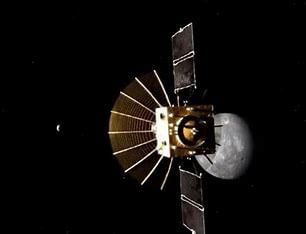
Why in News?
China National Space Administration (CNSA) recently said its launch of the Queqiao-2 satellite was a "complete success".
About Queqiao-2:
- It is a relay satellite launched by China to serve as a communications bridge between ground operations on earth and upcoming lunar probe missions on the far side of the moon until at least 2030.
- It has a 4.2-meter-diameter (13.8-foot) parabolic antenna that will be deployed once in space and is one of the largest sent beyond Earth orbit.
- It will be supporting China’sChang’e-6 lunar far-side sample return mission. It will further support the future Chang'e-7 and -8 lunar missions.
- It carries three science payloads: an Extreme Ultraviolet Camera (EUC), a Grid-based Energetic Neutral Atom Imager (GENA) and a very long baseline interferometer, the Lunar Orbit VLBI EXperiment (LOVEX).
- The mission will also be deploying two experimental CubeSats, Tiandu-1 and Tiandu-2, which will orbit the Moon to test navigation and communication technologies.
Source: Economic Times
|
39 videos|4560 docs|976 tests
|
FAQs on UPSC Daily Current Affairs- 13th April 2024 - Current Affairs & Hindu Analysis: Daily, Weekly & Monthly
| 1. What are volcanic vortex rings? |  |
| 2. How do volcanic vortex rings affect the surrounding environment? |  |
| 3. What is the significance of studying volcanic vortex rings for better education? |  |
| 4. How can scientists track and study volcanic vortex rings? |  |
| 5. What measures can be taken to mitigate the risks associated with volcanic vortex rings? |  |




























